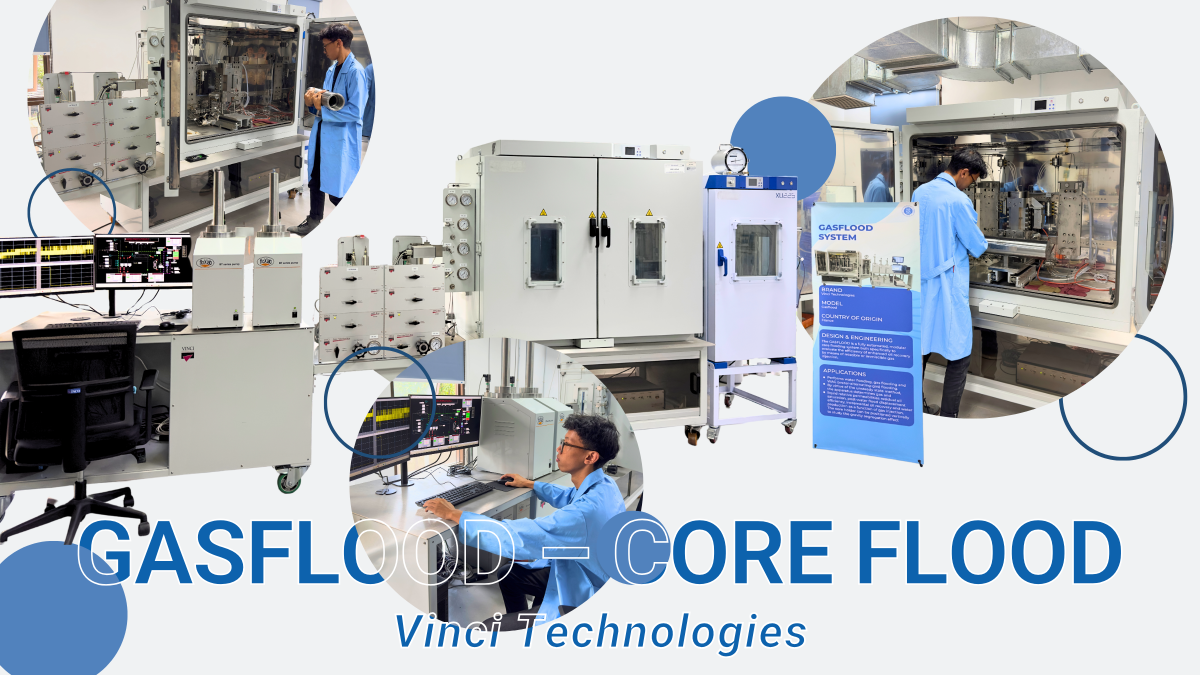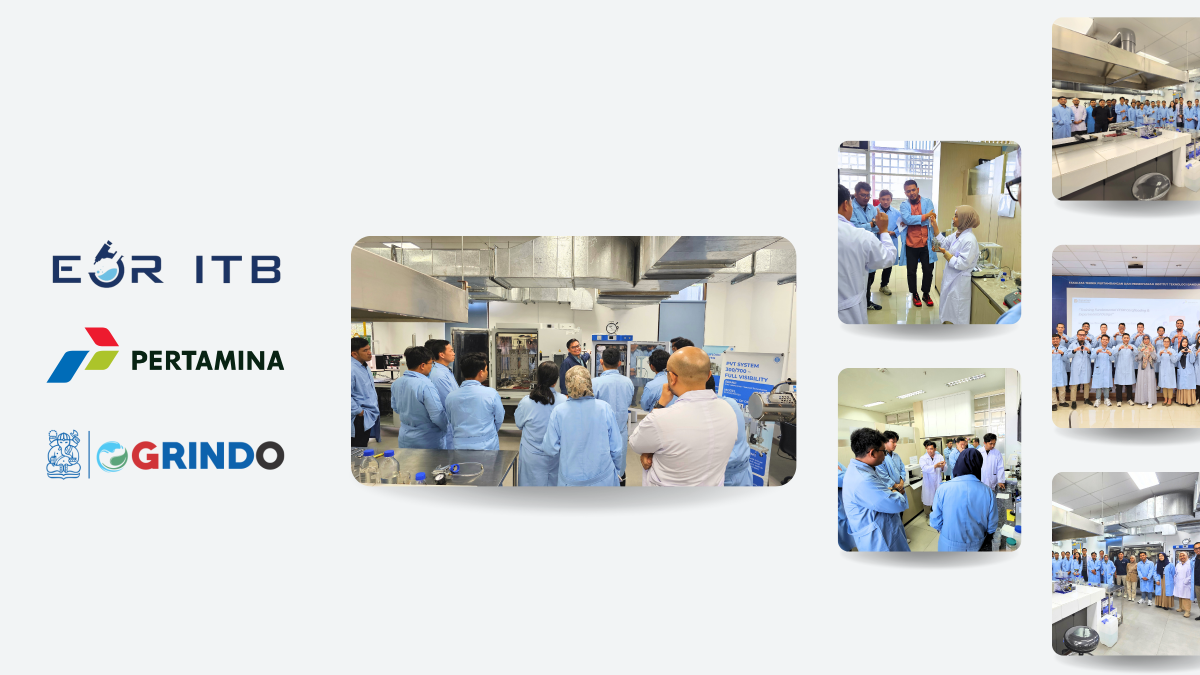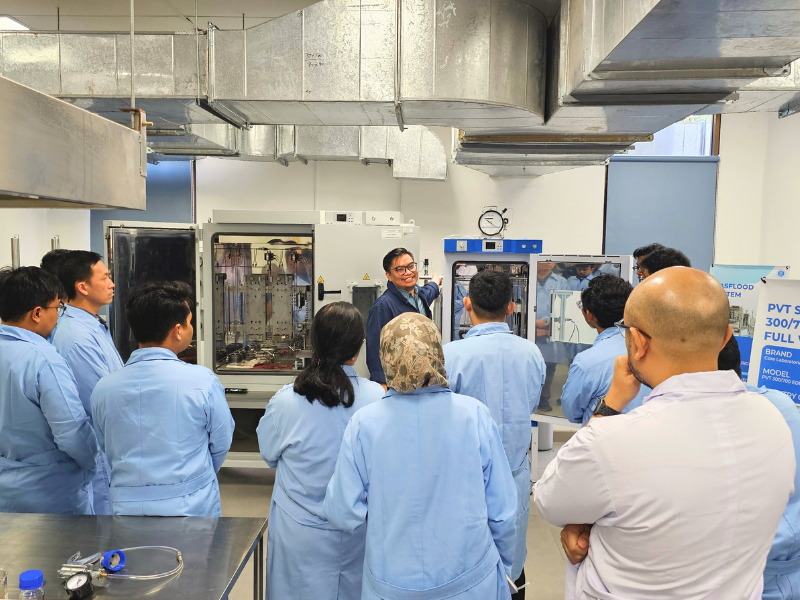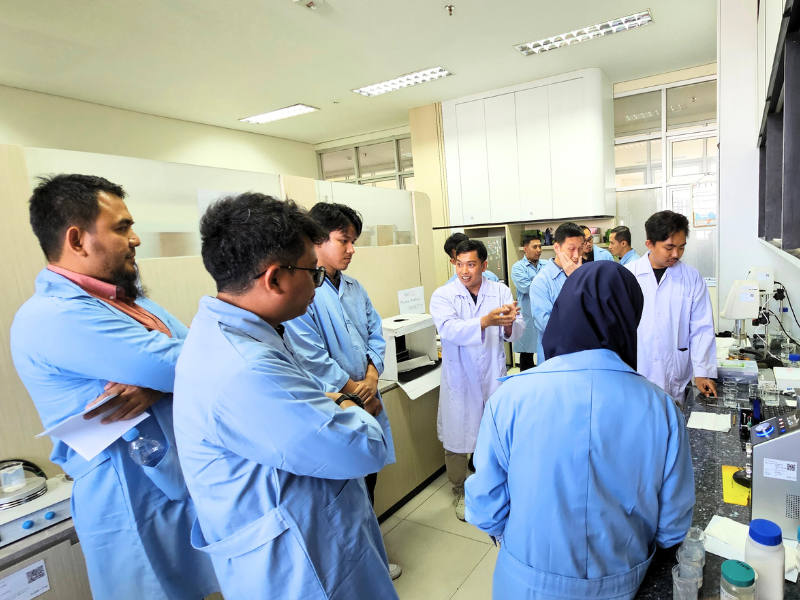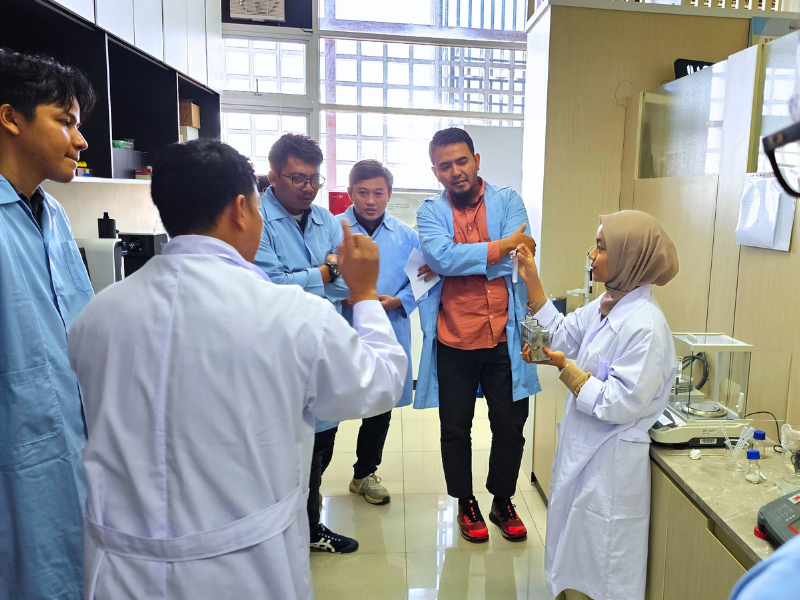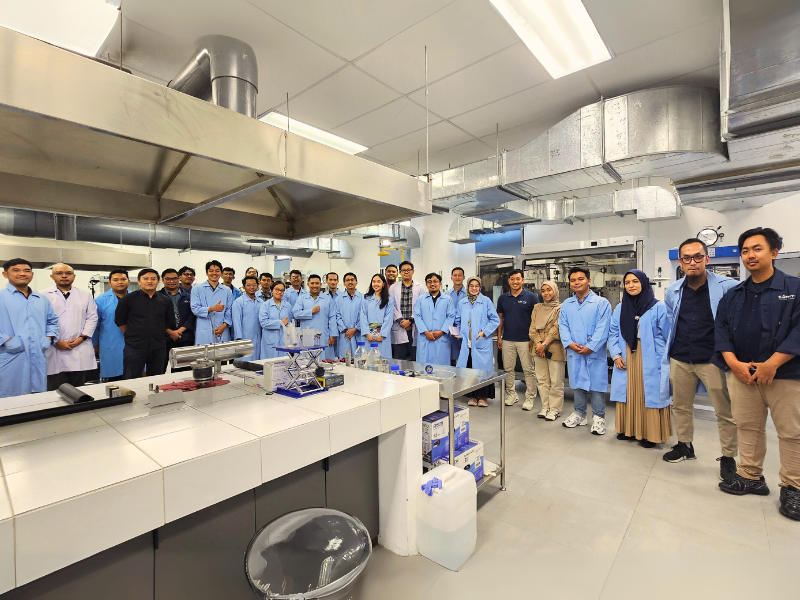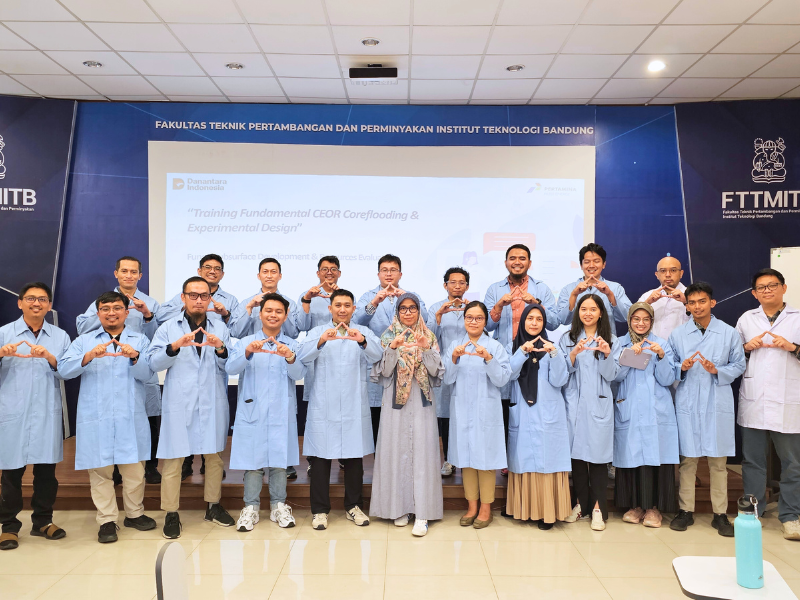Welcome to our premier research facility at Gedung Dato (Labtek XVII), Institut Teknologi Bandung!
Through a partnership between OGRINDO ITB and Purnomo Yusgiantoro Enhanced Oil Recovery (EOR) Laboratory, we jointly utilize the advanced Gas Flood Core Flooding facility to support research and development of Enhanced Oil Recovery (EOR) strategies based on gas injection (miscible and immiscible).
This collaboration enables resource sharing between academic research and industrial needs, ensuring that the facility can provide broader benefits for energy technology development.
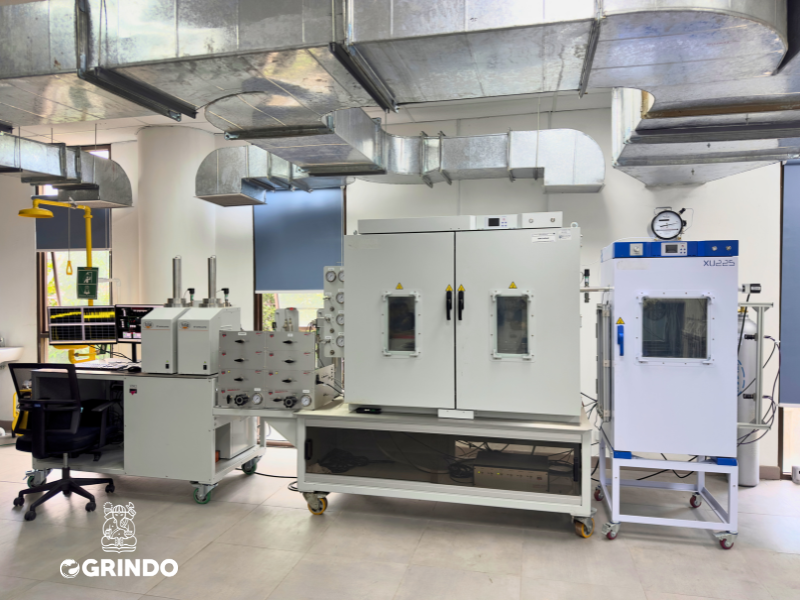
🛠️ Key Features of the Gas Flooding
This system offers the following advanced technical capabilities:
- High pressure: Confining pressure and pore pressure up to 700 bar (~10,000 psi).
- High temperature: Working temperature up to 150 °C.
- Capability to use gases such as CO₂, N₂, or hydrocarbon gases.
- Ability to perform water flooding, gas flooding, and WAG (Water-Alternating-Gas).
- The unsteady state method to obtain key parameters such as gas and liquid relative permeability, saturation of remaining oil, displacement efficiency after waterflooding, and water production related to gas injection.
- Core holder can be positioned horizontally.
- Wetted parts made of Hastelloy for superior durability.
With this system, the Purnomo Yusgiantoro EOR Laboratory in collaboration with OGRINDO ITB is able to simulate reservoir conditions in the laboratory and generate crucial experimental data for optimizing gas injection in the field.
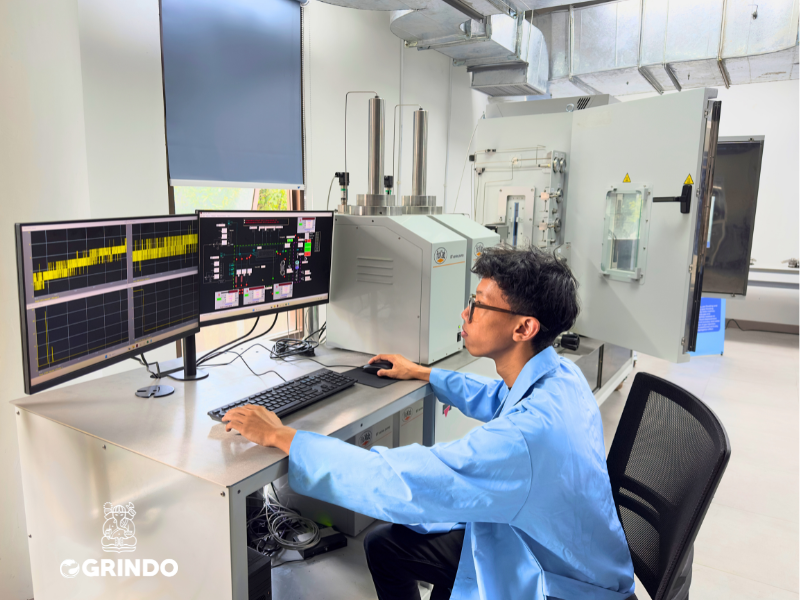
🔍 Applications and Benefits of the Collaboration
The collaboration between OGRINDO ITB and the Purnomo Yusgiantoro EOR Lab opens opportunities for research and services to:
- Determine the optimal gas injection strategy (gas type, pressure, and injection rate).
- Evaluate efficient WAG schemes.
- Assess oil displacement efficiency after waterflooding.
- Estimate additional oil production potential.
- Understand gravity segregation effects in gas injection.
- Provide critical laboratory test data as key input for reservoir modeling.
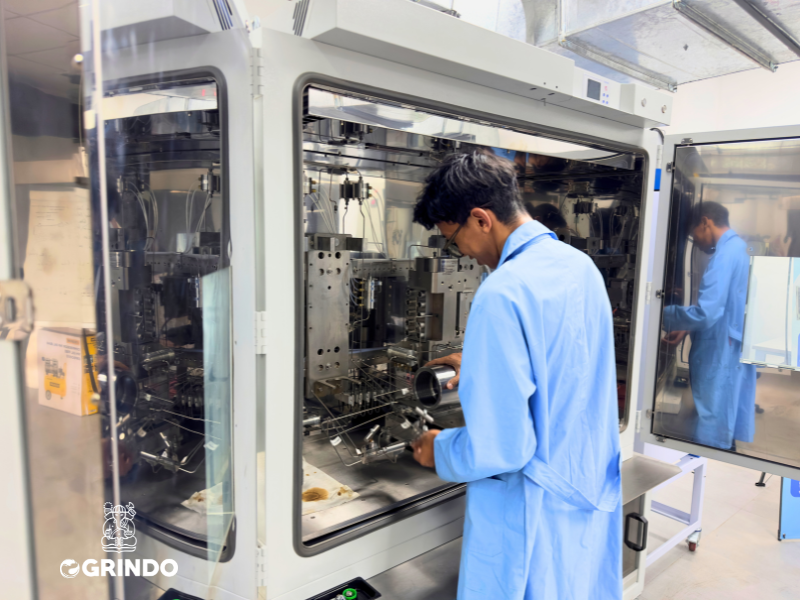
🤝 Joint Research and Services
The Purnomo Yusgiantoro EOR Laboratory, in collaboration with OGRINDO ITB, conducts various gas injection experiments, including CO₂, N₂, and other core flood studies, according to research and project requirements.
This collaboration represents a tangible example of resource sharing between industry and academia. Through this partnership, OGRINDO ITB and the Purnomo Yusgiantoro EOR Lab are ready to support:
- Joint research with oil and gas companies.
- Academic studies and university projects.
- Pilot study for energy and EOR technologies.
- CO₂-EOR initiatives or CCUS projects.
With a team of reservoir experts, state-of-the-art facilities, and extensive research experience, we are ready to be your strategic partner in advancing EOR technology in Indonesia.
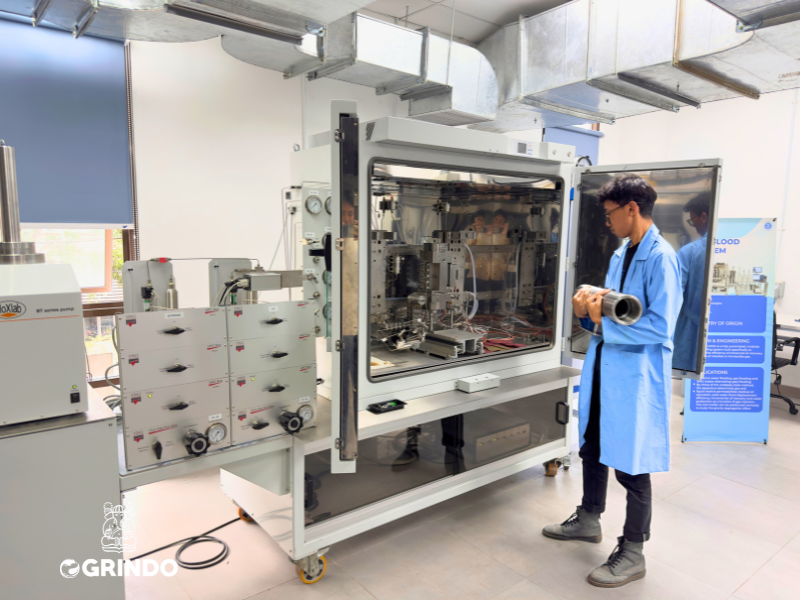
📞 Contact Us
For more technical information, service inquiries, or research collaboration:
📧 Email: info@ogrindoitb.com
🌐 Website: www.ogrindoitb.com
Visit our website to see complete specifications, research portfolios, and available services.
Together, let’s build the future of production optimization with advanced gas injection technology!


